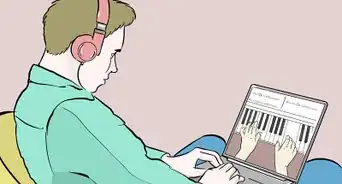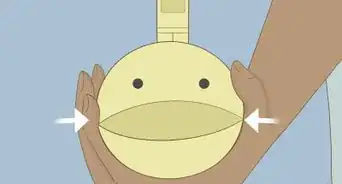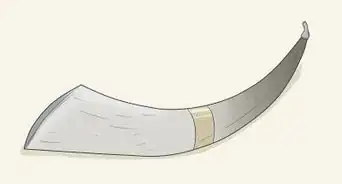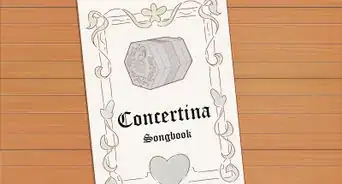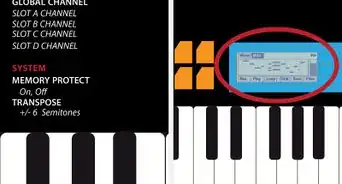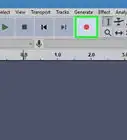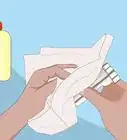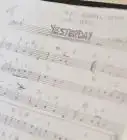wikiHow is a “wiki,” similar to Wikipedia, which means that many of our articles are co-written by multiple authors. To create this article, 44 people, some anonymous, worked to edit and improve it over time.
wikiHow marks an article as reader-approved once it receives enough positive feedback. This article received 17 testimonials and 86% of readers who voted found it helpful, earning it our reader-approved status.
This article has been viewed 563,596 times.
Learn more...
You might think that playing the accordion requires extensive knowledge of musical notation. But guess what? It actually doesn't. So if you're a beginner, and would like to find out more about how to play the accordion, read on to find out helpful tips.
Steps
Getting To Know Your Accordion
-
1Get the right kind of accordion. There are variety of different accordions out there, but some are more well-suited for beginners than others. The more information you gather the better equipped you will be to successfully learn to play the accordion. Here is the most suitable option for beginners[1] :
- Piano Accordions. These are the most popular kinds, with many of the capabilities of a regular piano (playing melodies, chords and basslines) in a highly portable size. They have between 25 and 45 piano-style treble keys on the right hand. On the left, they are equipped with a button keyboard with some buttons that play bass notes and some where a single button plays a three-note chord. This accordion system is called the Stradella, and typically has 120 bass buttons.
-
2Familiarize yourself with the instrument's structure. Your accordion is composed of several parts, all crucial to the accordion's sounds[2] :
- Melody Keys. These are keys on the keyboard part of the instrument.
- Bellows. These are the folds on the instrument that allow it to expand and contract, acting as the "lungs" for the instrument and creating the sound.
- Register Switches. These are buttons or tabs you press to change the tone of your accordion.There are usually register switches on the treble side for the piano keyboard and a second set for the bass buttons. The register switches can change the sound from deep and rich to high and thin.
- Air Valve. The air valve button allows air to escape, so you can open or close the bellows soundlessly.
- Right Hand Strap. This is the main strap of the instrument that allows you to secure it onto your chest. Some accordions have two straps for the chest.
Advertisement -
3Use the right size. Children and teens or adults will need to start off with different sizes due to the difference in hand and general body size[3] .
- Children should start with the lowest number of bass buttons, 12 bass and 25 treble keys.
- Teens and adults should start with a 48 bass accordion. This amounts to 48 bass buttons and 26 treble piano keys.
- The 48 bass Piano Accordion is very lightweight, and easy to use and handle. Plus, you can play lots of different music on it, which will make you want to hang on to it even if you outgrow it or progress to a larger instrument.
-
4Place your accordion on your chest with the key buttons facing away from you. When you begin handling your instrument in the next section of the article, your left arm will move horizontally and vertically, while your right hand will only move vertically. For now, just hold it and see how comfortable or uncomfortable it is.
Holding Your Accordion
-
1Sit or stand while holding your accordion. Some people prefer to stand while playing and others like to sit with their instrument. All that matters is your sense of comfort and confidence, so try out a few different positions until you feel at ease.
-
2Don't slouch. Your body posture is very important when playing this instrument and slouching will cause you to be inaccurate in your balance and consequently in your performance.
-
3Learn proper balance. The accordion is relatively large and requires a little bit of familiarity when holding it. Being able to maintain proper balance is crucial. The more evenly balanced you manage to keep the accordion's weight, the better you'll be able to play because of the added control. And the more control you have, the less uncomfortable the weight will feel.
-
4Secure the instrument onto your chest. Slip your left arm under the strap of the instrument. You'll want to hold it as if you were putting on a backpack on your chest. The piano keys should be to your right and your left hand goes underneath the bass strap - the small strap on the left side of the instrument[4] .
- Note that there is usually a thumb wheel on the left side to adjust the strap.
- Make sure that your accordion fits tightly enough not to move at all while you move.
-
5Try a back strap. An additional strap can be very useful. The back strap keeps the shoulder straps together so that the accordion doesn't move.
- Note that if the back strap is too far down it alleviates weight from the shoulders, making the straps loose on top. This, in turn, causes your straps to move and slide.
- Keep the back strap higher up, or secure it diagonally.
- Remember that when the straps stay in place, so does your instrument.
-
6Undo the safety buckles. The buckles can be found on the top and bottom of the instrument. Take care not to push or pull the accordion yet.
Playing Your Accordion
-
1Hold your wrist parallel to the keyboard. Don't bend your right wrist while keeping your elbow close to your side. It'll be a bit awkward at the beginning but you'll be able to achieve better accuracy as your hand's circulation won't be impeded.
- This applies the right arm only.
-
2Slip your left hand through the strap that lies below the bass button board.You'll be able to curl your fingers up and over the bass buttons. You right hand should be free and resting above the piano keyboard.
-
3Push down on the air valve (a lone button on the left hand side near the strap). Press the button down softly, and pull your instrument with your left arm. You'll hear a hissing noise as the air goes into the accordion and the bellows open.
- Note that it's important to use this air valve button when you open and close the bellows while they're moving.
- Don't press down on the keyboard while you're opening and closing the bellows at thus point, as we are focusing on the bass buttons.
-
4Focus on playing bass buttons first. No matter how many bass buttons your accordion has, you'll soon notice that they produce both bass notes and chords. Accordion chord buttons on the left side play three note chords, or "vamps", automatically. This is due to the accordion's internal mechanism[5] .
- The term "chord" refers to the sound produced by a group of notes played together.
- Keep the bass buttons pressed for only a short time. Imagine they were on fire, and take your finger off quickly. This is called "staccato" playing.
-
5Try not to look at where your bass fingers are going, because you cannot see your bass fingers if you are positioned properly. For this reason, no professional accordionists look at their bass hand. This will be quite difficult at first, but do your best not to look at where your fingers go, or need to go[6] . Learn to feel where the buttons are using your ear to tell you if you are on the right button.
-
6Find the note C. This button is usually a bit buried or recessed, but can be found on the top rows of buttons 8,12, 16, 24, 36 of all bass instruments. If your accordion is a larger model, then look for the note C in the second row. It may have a mark, jewel or indentation.
-
7We'll try the piano keyboard later. For now, your only concern should be getting comfortable with your instrument's bass buttons. Focus on the first columns of bass buttons[7] .
- Regardless of how many bass columns your accordion has, you'll only be looking at the first two or three columns. If you have a small beginner accordion, there may be only one column of bass buttons and then columns of chord buttons. In contrast, a big 120 bass accordion has two columns of bass buttons and four chord columns. If you have a 120 bass instrument, the bass column second from the front is called the "fundamental bass"; it is your main bass column. For now, you don't need to use the first column on your 120 bass section.
-
8Place your index finger on the C note. Then, tuck your thumb under your index finger and push on the button right beside the bass note C, the C Major chord. This button will be right beside (and off-center in an upwards direction) from the C bass button that your index finger is pressing (Note: all references to "beside" or "upwards" are in regards to an accordion in playing position, strapped on your chest).
-
9Pull the bellows out. Then, press the two buttons alternately (C bass note and the C chord) to generate a sort of of oom-pah sound.
- Try to pull the bellows smoothly for the best sound effect.
-
10Attempt a Waltz rhythm. The beat for the Waltz goes 1, 2, 3--1, 2, 3. This sounds like "oom-pah-pah". Play the C note on the first beat, and push the button right beside the C (the C Major chord button) on the second and third beats. As mentioned earlier, play all the notes staccato.[8] .
-
11Play the corresponding two bass buttons above and below the two you've just learned to play. The bass button below is F. The bass button above the C is G. With the F, you play the bass note F and the F Major chord button. For the G, you play the G bass button and the G Major chord. Usually, each chord is repeated several times before changing. This is how you can generate a simple accompaniment, or vamp. With just these three bass notes and chords, you could accompany hundreds of simple folk tunes and popular melodies!
-
12Add the bellows. Now try to pull the bellows in as you alternately press the buttons you just learned. Repeat this several times to practice.
-
13Practice the right-hand keyboard with little exercises. The note C (or Do) is the white key beside and above the two black notes. Let's try a keyboard scale exercise that will help you produce your first, controlled sound sequence[9] :
- Expand the instrument's bellows.
- Softly and evenly push it back together, and hold the 1st C key down.
- Keep pressing the note key while you change directions by pulling the instrument in opposite directions.
- Go to the next key, push in and pull apart.
- Jump to the next white keys one by one, and you have now played Do, Re, Mi, Fa, So, La, Si, Do (Also known as the notes C, D, E, F, G,A, B, C).
-
14Try a right-hand chord exercise. This keyboard exercise has a chord, and you can leave your fingers on the keyboard. Place your thumb on the C, and pinky on the G: begin with the third finger on the E[10] .
-
15Continue practicing at a steady tempo. Rhythmic time-keeping is one of the key roles of the accordion. One way to get steady rhythm is to practice with a metronome.
-
16Try to play bass buttons and right-hand chords at the same time. Play a C bass note alternating with a C Major bass button chord until it is smooth and easy. Then add in a right-hand C Major chord (the white notes C, E and G). This right-hand chord can be sustained, or it can go along with the bass button chords.
- Coordination of both hands might seem a little difficult at first, so it's important that you become very familiar with the necessary movements. Repeat the above exercise until you feel confident and can move on to more advanced songs.
Community Q&A
-
QuestionHow do I maintain my accordion?
 Community AnswerKeep it in a cool place and never, never in sunlight or near high heat sources. There is a waxy substance for every key stop internally. Always keep it in its case when not in use.
Community AnswerKeep it in a cool place and never, never in sunlight or near high heat sources. There is a waxy substance for every key stop internally. Always keep it in its case when not in use. -
QuestionHow can I tell if my accordion is tuned correctly?
 Community AnswerSeveral places online will play a specific note to aid in tuning; match the note played with that on your accordion.
Community AnswerSeveral places online will play a specific note to aid in tuning; match the note played with that on your accordion. -
QuestionHow do I tell which buttons are which on an accordion?
 Community AnswerIn a piano accordion, the bass buttons are organised according to the circle of fifths - so for example, the button above C is G (a fifth higher), and the next one is D (another fifth higher). The button below C is F (a fifth lower). On each horizontal row, you have several different variations of the same chord (except for the first column). For example, on the C row, the second button is a plain C note, the third is a major C chord, the fourth is a minor C chord, the fifth is a dominant 7 C chord, and the sixth is a diminished 7 C chord. It goes this way for all rows.
Community AnswerIn a piano accordion, the bass buttons are organised according to the circle of fifths - so for example, the button above C is G (a fifth higher), and the next one is D (another fifth higher). The button below C is F (a fifth lower). On each horizontal row, you have several different variations of the same chord (except for the first column). For example, on the C row, the second button is a plain C note, the third is a major C chord, the fourth is a minor C chord, the fifth is a dominant 7 C chord, and the sixth is a diminished 7 C chord. It goes this way for all rows.
Warnings
- Never push or pull on an accordion unless a key or the bellow-release button (a button at the top of the bass side of the accordion, where the hand strap is, that allows you to move the accordion without making sound) is pressed - this could damage the reeds making the accordion sound out of tune.⧼thumbs_response⧽
- Always keep your accordion stored upright (sitting on the bass buttons) whether it's in a case or not. If stored in other positions, it can damage the leather flaps.⧼thumbs_response⧽
- Keep it in moderate temperatures. There is wax in the accordion, therefore it can crack if it's too cold and melt if it's too hot.⧼thumbs_response⧽
- Don't keep it in the car, since the temperature can easily be boiling hot or freezing cold.⧼thumbs_response⧽
- If bringing an accordion inside from the cold, let it warm up to inside room temperature before playing.⧼thumbs_response⧽
References
- ↑ http://www.accordion-o-rama.com/specifics.html
- ↑ https://cdn.shptrn.com/media/mfg/329/media_document/7849/ACDN_Instructions.pdf?1377533740
- ↑ http://www.accordion-o-rama.com/specifics.html
- ↑ http://www.chimes.com/images/document/productinstructions/accordion-instructions.pdf
- ↑ http://www.zisman.ca/squeezebox/Music/The%20Piano%20Accordion%20(1938)%2016%20pg.pdf
- ↑ http://www.zisman.ca/squeezebox/Music/The%20Piano%20Accordion%20(1938)%2016%20pg.pdf
- ↑ http://www.zisman.ca/squeezebox/Music/The%20Piano%20Accordion%20(1938)%2016%20pg.pdf
- ↑ http://www.zisman.ca/squeezebox/Music/The%20Piano%20Accordion%20(1938)%2016%20pg.pdf
- ↑ https://cdn.shptrn.com/media/mfg/329/media_document/7849/ACDN_Instructions.pdf?1377533740
About This Article
If you want to learn to play the accordion, hold the instrument against your chest with the key buttons facing away from you. Then, slip your left arm under the strap on the accordion. When you’re playing, you’ll press the piano keys, which produce the melody, with your right hand, and you’ll press the bass buttons, which produce chords, with your left hand. You’ll also use your left hand to open and close the bellows, or the folded part. This forces air in and out of the instrument, which produces its signature sound. To learn how to play specific notes or music on your accordion, read on!

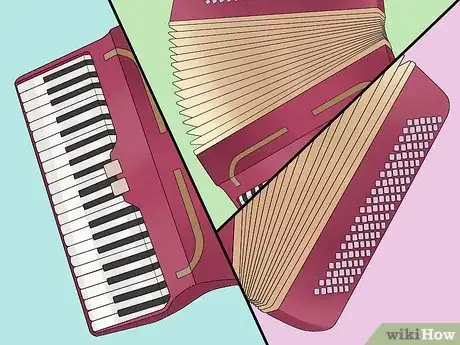
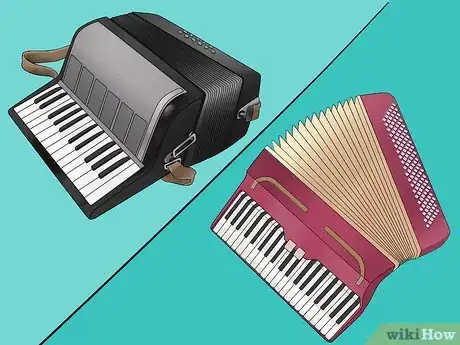
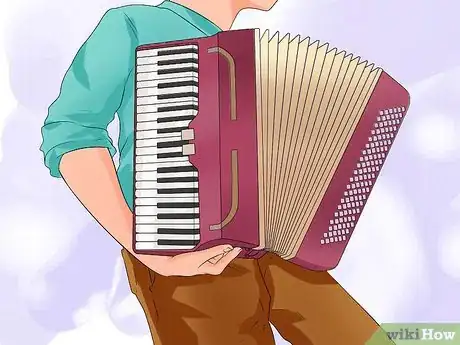
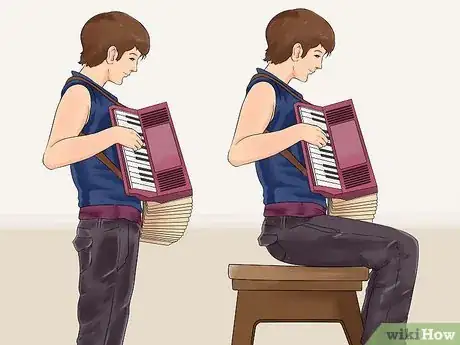
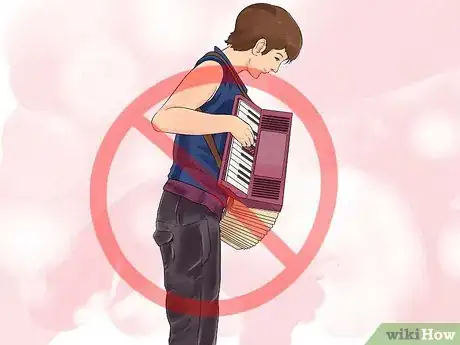
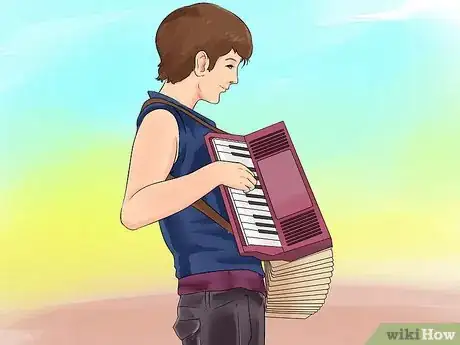

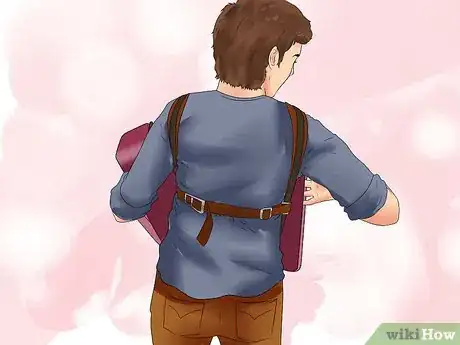

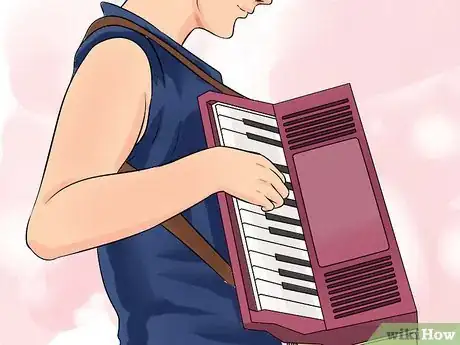
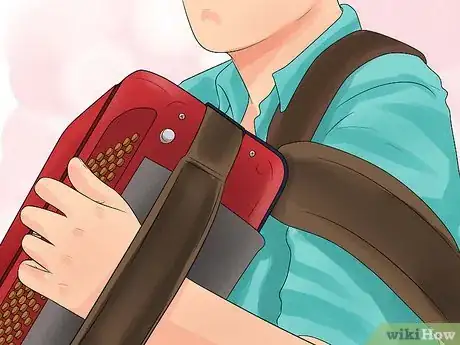
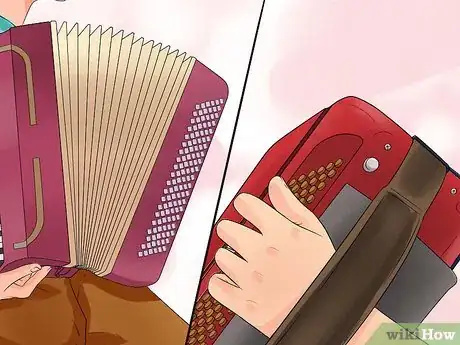
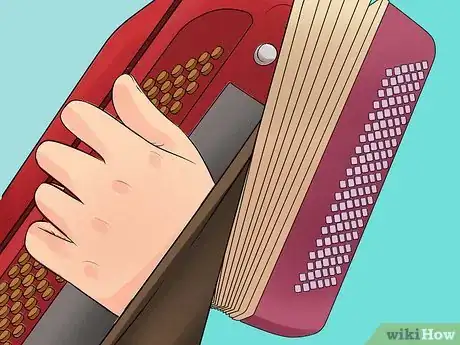
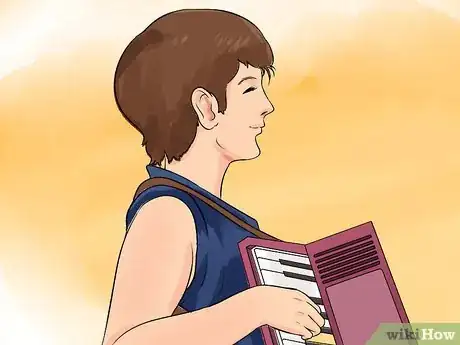
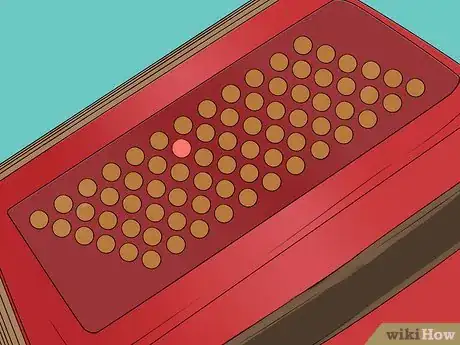
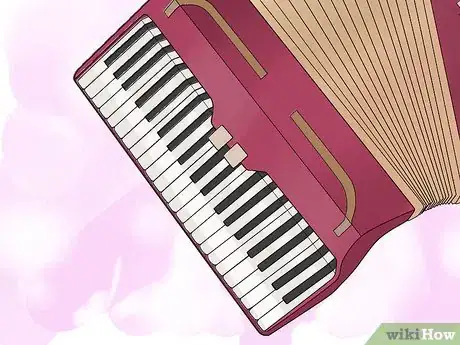
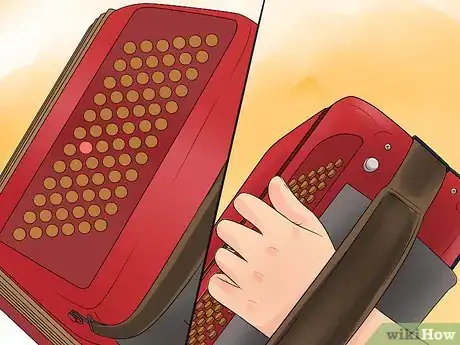

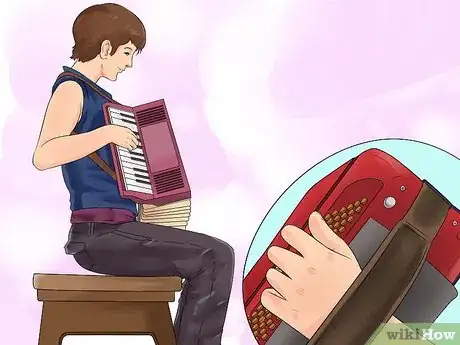
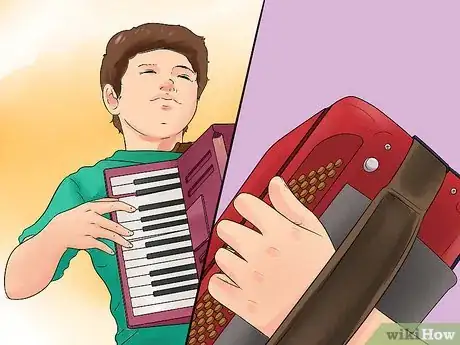
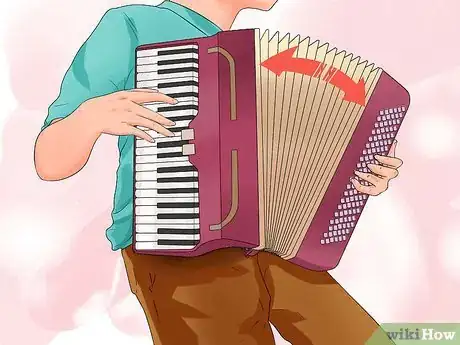
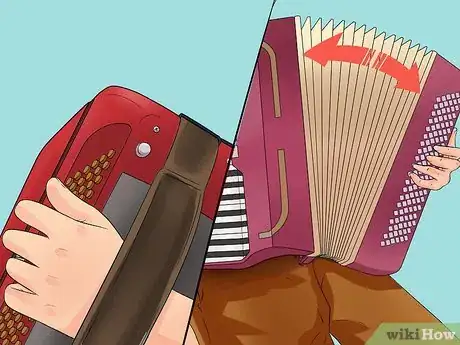


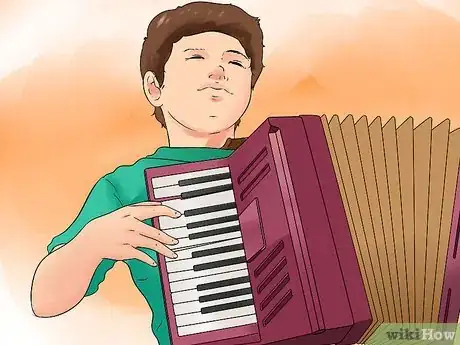
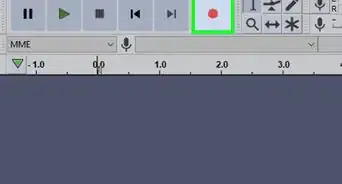

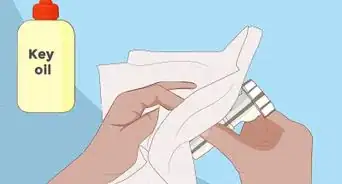
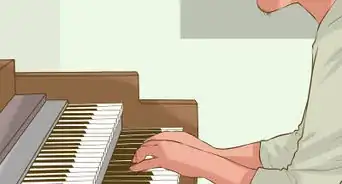
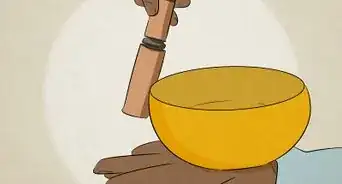
-Step-17-Version-4.webp)
